THIS ARTICLE/PRESS RELEASE IS PAID FOR AND PRESENTED BY NTNU Norwegian University of Science and Technology - read more
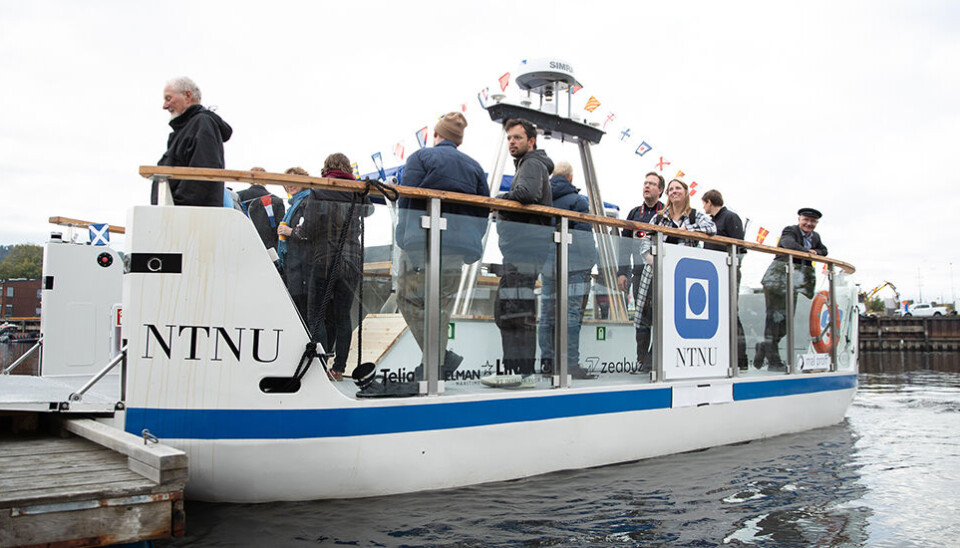
World’s first self-driving passenger ferry trialled in Trondheim
In earlier times, cities like Trondheim and Bergen had a ferryman who rowed people from place to place. They were the taxi drivers of the waterways. Now, a new, future-oriented form of water transport will be available to the public.
The autonomous passenger ferry milliAmpere 2 is now running shuttle traffic across the main channel in Trondheim until mid-October. The public can jump on board during the trial period and test the new technology, while researchers survey the public’s experiences.
This is the first time a self-propelled electric passenger ferry has been put into trial operation along urban waterways.
Autonomous and electric passenger ferries could replace expensive, space-consuming and less eco-friendly bridges and tunnels in cities with waterways that are an integral part of the city core.
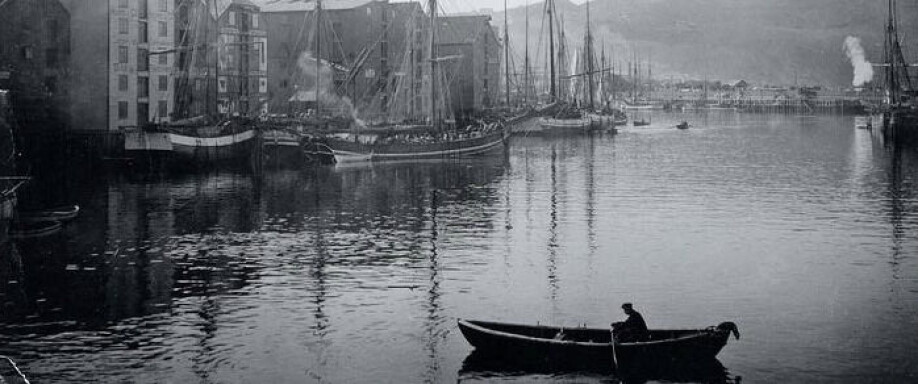
Revitalising public transport
The technology has the potential to revitalise public transport in a sustainable way by using urban waterways in a new way.
“This is the first step towards a new form of micromobility in cities with urban waterways,” says Morten Breivik, an associate professor at NTNU’s Department of Engineering Cybernetics.
“In the longer term, the technology can be further developed to create green, flexible and cost-effective transport along the entire Norwegian coast,” he says.
Breivik plays a key role in the interdisciplinary environment at NTNU that has developed the technology.
“These ferries will be significantly cheaper to operate than staffed ferries and can more easily be deployed on multiple routes as necessary. In the long term, the ferries may make it more attractive to live in the district, particularly for young people who want access to better mobility options,” he says.
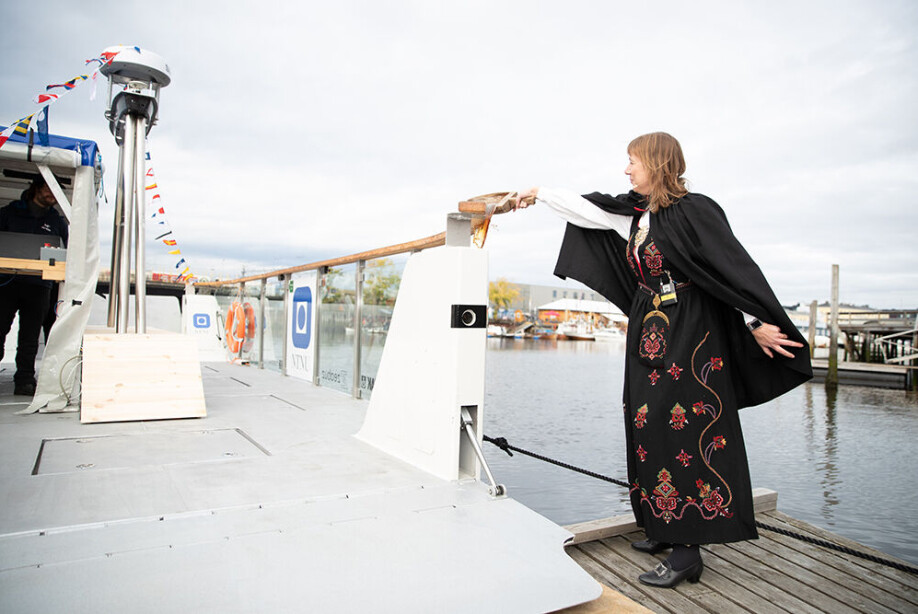
International interest
Several countries are showing interest in the autonomous passenger ferry technology for urban areas. A delegation from France was in Trondheim this spring to look at the possibilities for acquiring and putting such passenger ferries into operation along the river Seine during the 2024 Olympics.
The spinoff company Zeabuz is commercialising the NTNU technology.
In the summer of 2023, Zeabuz and the Norwegian ferry company Torghatten will in partnership launch a self-propelled ferry on the waterways in Stockholm. The ferry will run between Södermalm and Kungsholmen.
The story behind the new ferry
The NTNU ferry was developed by researchers and students from several academic areas who collaborated to develop milliAmpere 2 and its precursor milliAmpere that was Norway’s very first prototype of an autonomous ferry. milliAmpere was built in 2016.
Egil Eide, an associate professor at the Department of Electronic Systems, says that the team gained a lot of experience from the first version. The new milliAmpere 2 now being put into trial operation is significantly larger than its predecessor, has more advanced technology located under the deck along with a new, improved design.
The milliAmpere 2 is a full-scale prototype for self-propelled urban ferries that will now be available to the public for three weeks.
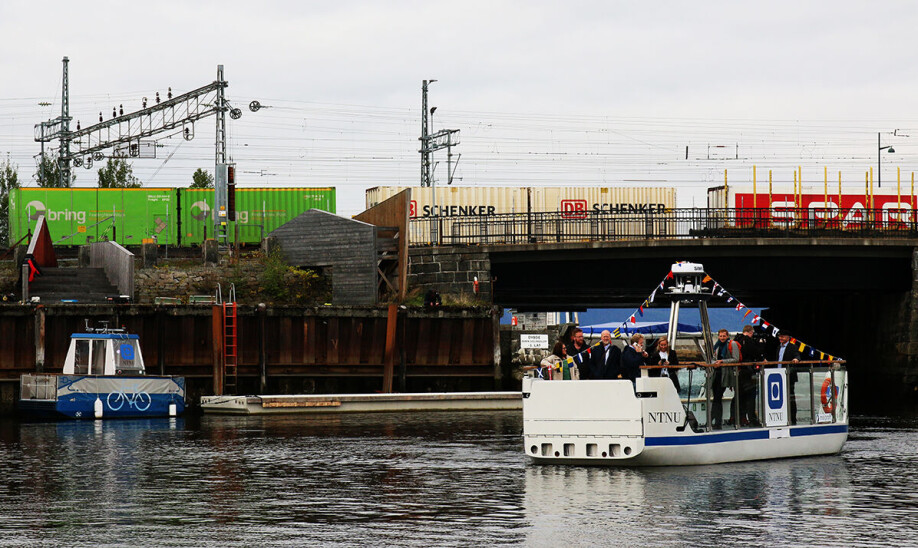
Advanced technology and design
Experience from the first prototype showed a need for the hull to be able to accommodate more technology. Below deck, the hold is now filled with batteries, chargers, powerful computers and a system for dynamic positioning.
A number of sensors such as rangefinders, cameras, laser vision and radar are mounted on deck so that the automation system receives enough data about the surroundings to avoid collisions with land or other vessels.
Also, sensors have been installed that will give an operator in a land-based control room a good enough understanding of the situation to be able to take over control should the need arise.
The design experiences have also been important. Railings and bench surfaces for the new model are made of wood to give a little warmer feel than with the first version. The new NTNU ferry is also quite spacious, which will help passengers feel safe, and not like herrings in a barrel.
The passenger ferry has room for 20 people, but will be limited to a maximum of 12 passengers on board at one time during the trial operation.
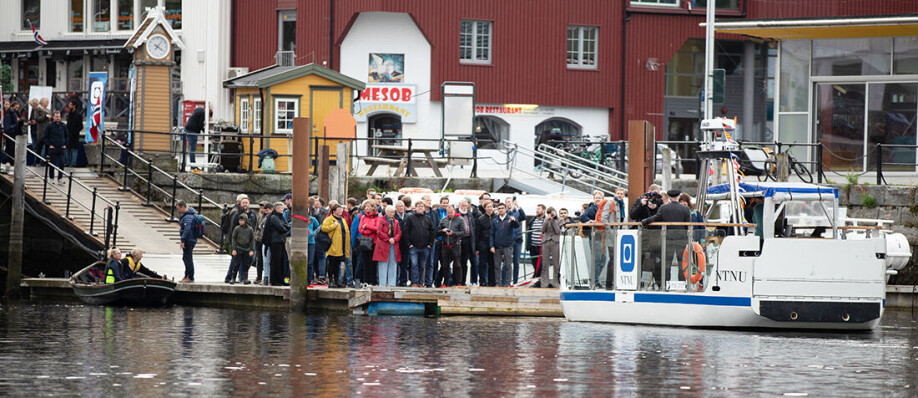
World-leading technology and expertise
NTNU in Trondheim has a complete infrastructure for research, development and innovation in place for an autonomous passenger ferry that is unique in the world.
The infrastructure consists of:
- the two test ferries milliAmpere 1 and 2
- a control room in Trondheim Maritime Centre at Nyhavna
- a digital twin (Gemini) to test operation of the ferries digitally and virtually
- a hybrid lab (MRlab) where both physical components and virtual reality enable quick testing of the physical design of the ferries in a combined physical-virtual world.
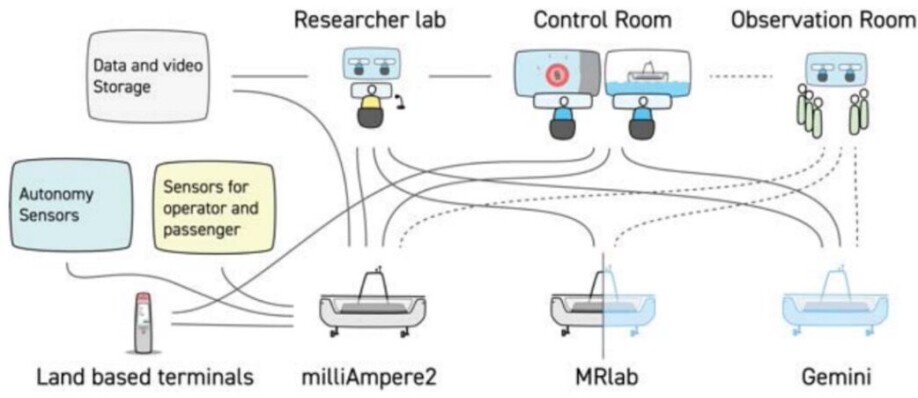
Close collaboration between research and industry
NTNU and the Research Council of Norway have invested just under EUR 4 million in infrastructure development and financing of doctoral candidates, postdocs and commercialisation projects in this field since 2017.
The project has involved 10 professors, 15 doctoral candidates, 2 postdoctoral fellows, approximately 50 master’s students and 20 bachelor’s students, and 5 technical employees.
The sum of the extensive research investment and testing with business partners means that Trondheim today has almost turnkey technology for autonomous passenger ferries – as well as an academic environment that is the world’s largest and has the greatest depth within this niche.
Interaction between human and machine
During the trial run, researchers with a background in design, psychology and sociology will survey passengers’ reactions and experiences, including whether they feel safe using the ferry or not, and factors that contribute to making the experience safe or unsafe.
During the trial operation, a person will be present on the ferry to ensure safety.
“There is a big focus on safety and interaction between humans and machine,” says Ole Andreas Alsos, an associate professor at NTNU’s Department of Design.
Captain on land
Alsos heads an academic team that is working to develop control rooms on land where a captain/operator keeps a close eye on ferry operations.
“Our team is working on the operator control room, which is where the operators will monitor the vessels and make sure that everything is running as it should, and who can intervene if problems arise,” Alsos says. “Research shows that teams consisting of people and autonomy provide safe, secure and robust systems."
Uses 3D simulator platform
To study the interaction between humans and autonomous vessels, the team uses the Gemini 3D simulator platform, which is designed to test the safety of autonomous ships.
A customised 3D simulator platform will be used to measure how the operators interact with milliAmpere 2 and how the passengers and the environment respond to the autonomous ferry.
The Department of Design is also responsible for human factors in the AutoShip research centre.
———
Read the Norwegian version of this article on forskning.no
Read more content from NTNU:
-
Why are pregnant women in Norway so worried?
-
Politics on Facebook: Populist parties choose divisive issues on purpose
-
Social media is connected to cyberbullying – but not how we thought
-
Forskere ved NTNU får nesten 24 millioner av EU for å lage nye strømomformere
-
This helps the youngest children enjoy school more
-
Can we tap the ocean’s power to capture carbon?





































